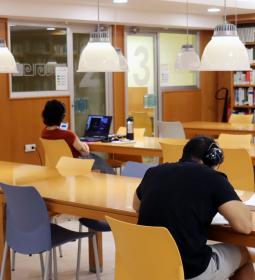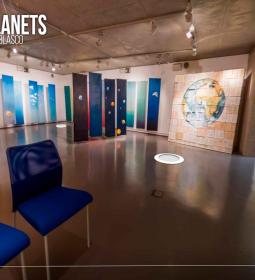To guarantee security, access to the square will be restricted from Monday 10 to Friday 14
Benidorm installs next week the new lighting of El Castell and the systems to air the archaeological remains

Benidorm City Hall will install next week the new lighting of Plaza del Castell and the mechanical ventilation systems of the windows that protect the visible archaeological remains of the old fortification. The Councilor for Historical Heritage, Ana Pellicer, explained that "it is the work that was pending to be carried out within the work of archaeological intervention that has allowed to recover and put in value the vestiges of the old fortification that presided Punta Canfali" .
Pellicer has indicated that "we could not perform these works before the public opening of the square, on November 29, because we were waiting to receive these supplies."
The head of Historical Heritage has indicated that to "guarantee the safety of users, it has been decided to restrict access to the square during the five days that will last the works, from next Monday, February 10 to Friday, day 14".
As detailed during the works, the provisional lighting installed in the pergola will be removed, which will be replaced by definitive projectors, and also will be provided with connection to the municipal electricity network to various electrical panels to meet the needs of the activities that take place in the square. Likewise, the air renewal machines of the closed archaeological windows are going to be installed and tested to prevent moisture so that the protected remains can be seen in detail.
Pellicer has advanced that "in the coming weeks the information panels will be placed that will explain each of the preserved remains of the old fortification, as well as an explanation of the site of the site and evolution of the castle."
The councillor recalled that the excavations have allowed to find traces of the different construction moments of the fortress: medieval period (fourteenth century, founding moment of Benidorm), mid-sixteenth century and modern era (eighteenth century). These vestiges have been valued through windows and floors of tradable glass. Specifically, the remains of the medieval walls of Levante and Poniente have been exposed; the cistern with associated watering hole; an eighteenth-century staircase that allowed access to the upper floor of the castle and the modern wall; and the closing wall, part of the moat and one of the walls of the tower of Levante. In addition, a differentiated running pavement has been installed that marks the alignment of the structure of the castle in modern times (18th century). This pavement is combined with the Portuguese roadway present throughout the Castell and with the granite in checkerboard of the central pergola. A pergola that grows in width with respect to the previous one, and that is complemented with shallow and avant-garde furniture.
In addition, on El Castell square a wind rose made of granite and bronze has been installed in which the main local and geographical landmarks of each cardinal point are shown, as well as the most unique indigenous fauna specimens that can be found in the same.
Project financing
The ‘Project of archaeological intervention and construction of the recovery and enhancement of El Castell in Benidorm’ has meant an investment of 1.2 million euros. Of these, 500,000 euros correspond to a grant of European funds through the grant line for the protection or recovery of Valencian cultural heritage of the FEDER Operational Program 2014-2020.
Beyond the archaeological action, the project has made it possible to consolidate Punta Canfali on its slope of Levante, with the installation of 18 meters that ensure the stability of the headland.




